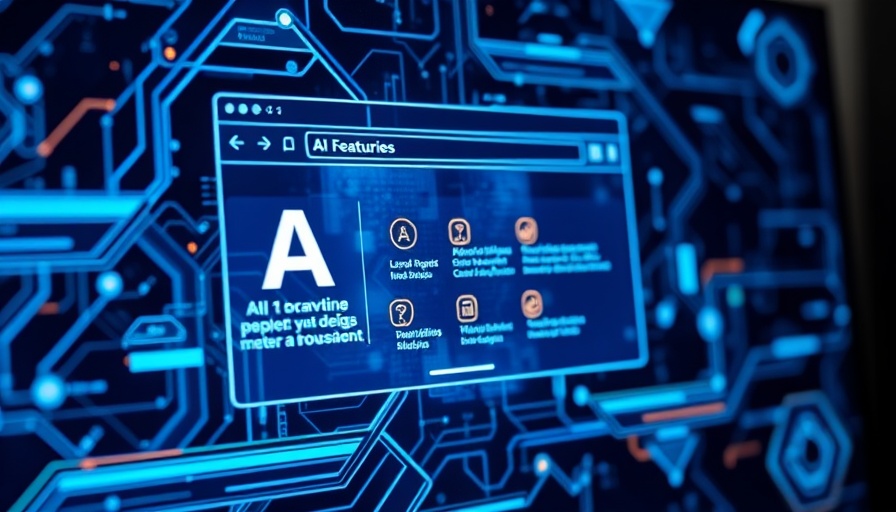
Microsoft's Copilot Mode: A Game Changer in Browsing Experience
In a bid to redefine web navigation, Microsoft has launched its new “Copilot Mode” in the Edge browser. This revolutionary feature integrates artificial intelligence (AI) to facilitate a more organized and efficient browsing experience. As tech competition intensifies, Microsoft is positioning itself as a forerunner in this space, joining the ranks of other tech giants like Google and emerging startups who have been quick to adopt AI technologies.
Redefining Interaction with AI
Copilot Mode streamlines user tasks by consolidating various functions into a single input box that combines chat capabilities, search, and web navigation. This user-friendly interface allows users to conduct topic-based queries and compare information across multiple tabs without the hassle of switching back and forth. It is truly designed with the user's convenience in mind, enhancing the efficiency of daily online activities.
The Rise of AI Browsers: Contextual Background
The launch of AI-integrated browsers follows a trend in the tech industry where companies are increasingly emphasizing the role of AI to enhance user experience. Nvidia's Perplexity AI and the upcoming offerings from OpenAI are examples of this accelerating trend. Recent reports have also highlighted Google’s introduction of “AI Mode,” which similarly focuses solely on AI-driven search. These developments signify a larger shift towards smarter and more intuitive user interfaces.
Voice Navigation: A Step Towards Seamless Browsing
Copilot Mode also introduces a voice navigation feature that allows users to interact with the browser hands-free. This innovation not only promotes accessibility but also enhances multitasking capabilities for users who may not have the time or resources to actively engage with their devices. As voice recognition technology improves, we can likely expect this feature to become standard in modern browsers.
User Empowering Features: Security and Confidentiality
What sets Microsoft’s Copilot apart is its user-first approach to security and confidentiality. The feature allows users to control how much browsing context Copilot can access, ensuring that sensitive information remains protected. The ability to receive visual cues about when Copilot is active further empowers users to make informed decisions about their online interactions, addressing common concerns about privacy in AI systems.
Engagement Metrics: The Future of User Interaction
With AI enhancements, companies are reporting noticeable improvement in user engagement with online tools. Alphabet’s Google, for instance, has recorded a positive shift in user interactions with its AI-only search features. As Microsoft rolls out Copilot Mode, it will be crucial to analyze metrics to understand its impact on user satisfaction and engagement within Edge.
Future Predictions: What Lies Ahead for Browsing Technology
The future of web browsers is undeniably tied to the development of AI technologies. As users become more accustomed to intelligent systems that assist in online tasks, the demand for responsive and intuitive browsers will likely soar. We could very well see further innovations that allow for predictive browsing and personalized content delivery, tailored to individual preferences and histories, deepening the level of engagement.
Conclusion: Embracing the New Wave of Technology
As Copilot Mode launches across various markets, it signals a new era in web browsing characterized by AI assistance and improved user experience. The shift towards AI-integrated technologies in browsers not only enhances functionality but also promises to change the way we interact with the digital landscape. Users are encouraged to explore these new features, as companies like Microsoft pave the way for an AI-driven future in technology.
As we stand on the threshold of this transformation, it becomes imperative for individuals and businesses alike to stay abreast of these technological advancements that could redefine online productivity and engagement for years to come.
 Add Row
Add Row  Add
Add 




Write A Comment